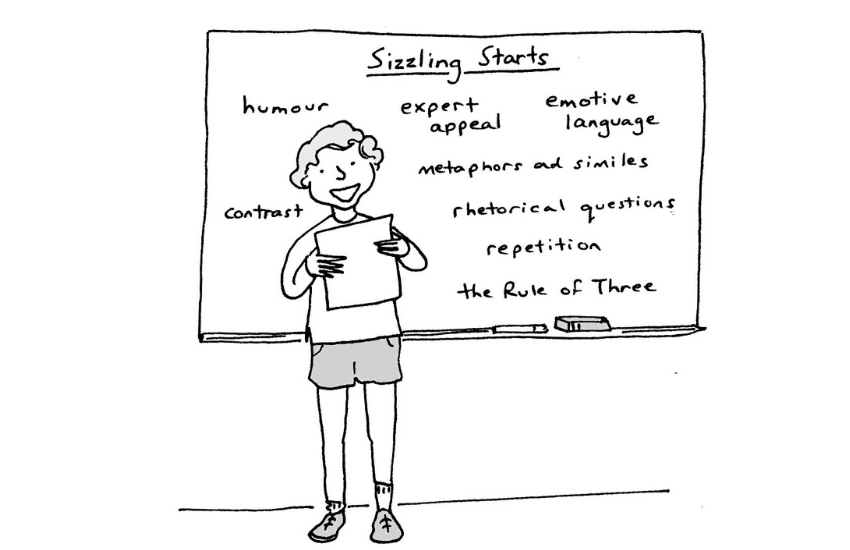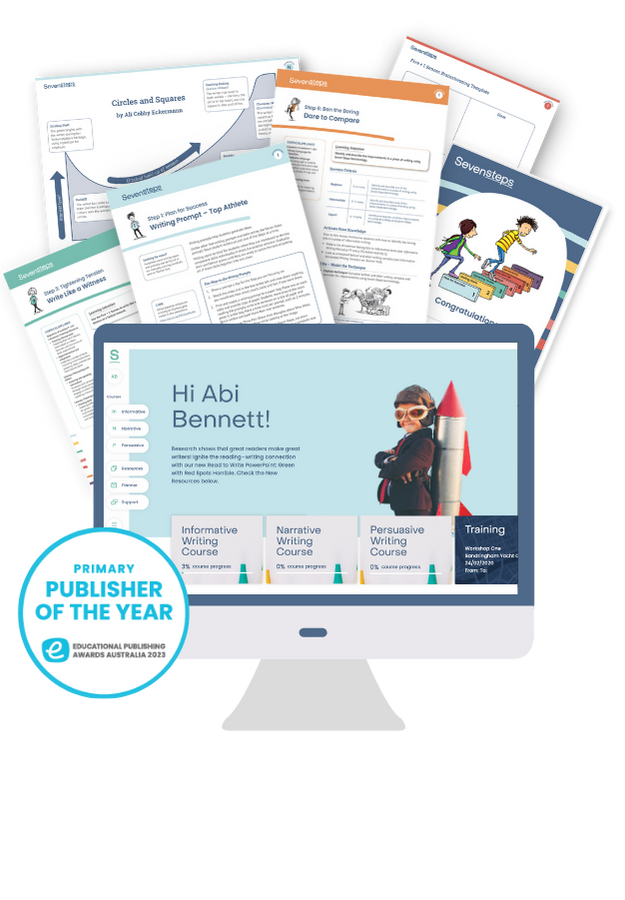No products in the cart.

3 min

Classroom Activities

Admin SEVEN STEPS
As with any type of text, you only have a few sentences to grab the reader’s attention and make an impression. The introduction to a persuasive text is the hook that engages the reader and makes them want to read more. This is why a Sizzling Start can make such a difference to students’ writing.

The purpose of an introduction
According to NAPLAN, ‘The purpose of the introduction is to introduce the reader to the main idea of the essay. It should provide some context or identify issue(s) associated with the topic, and it should capture the interest of the reader and tell why the topic is important.’
This does not mean that you need to stick to the standard formula of stating your case and listing your reasons. The NAP website suggests several different ways you could approach an introduction, including ‘a definition of the topic, generalisations about the topic, a list of the main points of argument or a short anecdote’.
These alternatives give students the opportunity to be far more creative and stand out from the crowd.
Listen to the first few minutes of this persuasive speech presented by Severn Suzuki at the Rio Earth Summit in 1992:
This example:
- introduces the topic
- highlights some of the associated issues
- captures the reader’s interest
- tells us why the topic is important.
In fact, it did these things so successfully that Severn was heralded as, ‘the girl who silenced the world for five minutes’. Wouldn’t it be amazing if your students’ persuasive writing had a similar impact on you?

Using persuasive devices
A great introduction should also use a range of persuasive devices,
such as:
- Emotive language
- Expert appeal
- Metaphors and Similes
- Humour
- Contrast
- Rhetorical questions
- Repetition
- Rule of Three
Severn uses several of these devices in the introduction to her speech. For example:
- ‘fighting for my future’, ‘starving children…whose cries go unheard’ (emotive language)
- ‘Did you have to worry of these things when you were my age?’ (contrast and rhetorical questions)
- ‘You don’t know how to fix the holes in our ozone layer. You don’t know how to bring the salmon backup and a dead stream. You don’t know how to bring back an animal now extinct.’ (repetition and the Rule of Three)
Familiarise students with these persuasive devices using examples from other persuasive texts and give them plenty of opportunities to use them in their own writing.


The power of a Sizzling Start
There are 6 marks up for grabs in NAPLAN for demonstrating the capacity to, ‘orient, engage and persuade the reader’ (Audience). However, a Sizzling Start also has value beyond the classroom; it may make all the difference when applying for a job, settling a dispute, raising awareness about community issues, reviewing a product or service, etc.
Encourage students to be on the lookout for Sizzling Starts in ‘real life’, it won’t be long before they are seeing them everywhere!

Sizzling Starts Action Activity
In the lead up to Earth Hour (or any time), challenge students to write a Sizzling Start for a persuasive speech about an environmental issue of their choice.
Ask students to form groups and brainstorm ideas for a Sizzling Start on one of the following topics, or a topic of their own choice:
- Renewable energy
- Nuclear power
- Drought
- Conserving the Great Barrier
- Shark culling
Get students to write a Sizzling Start individually using the ideas from the group brainstorm. Students could present their Sizzling Starts at assembly or in the school newsletter to raise awareness about their chosen issue.

Want more Sizzling Starts resources?
Head over to our Sizzling Starts page for free Action Activities, writing samples and more.
For more Sizzling Starts resources, check out our Teacher Hub resource library.
Teacher Hub
Skyrocket engagement & writing results
On-demand PD, classroom-ready resources and time-saving planning tools all in one place.





